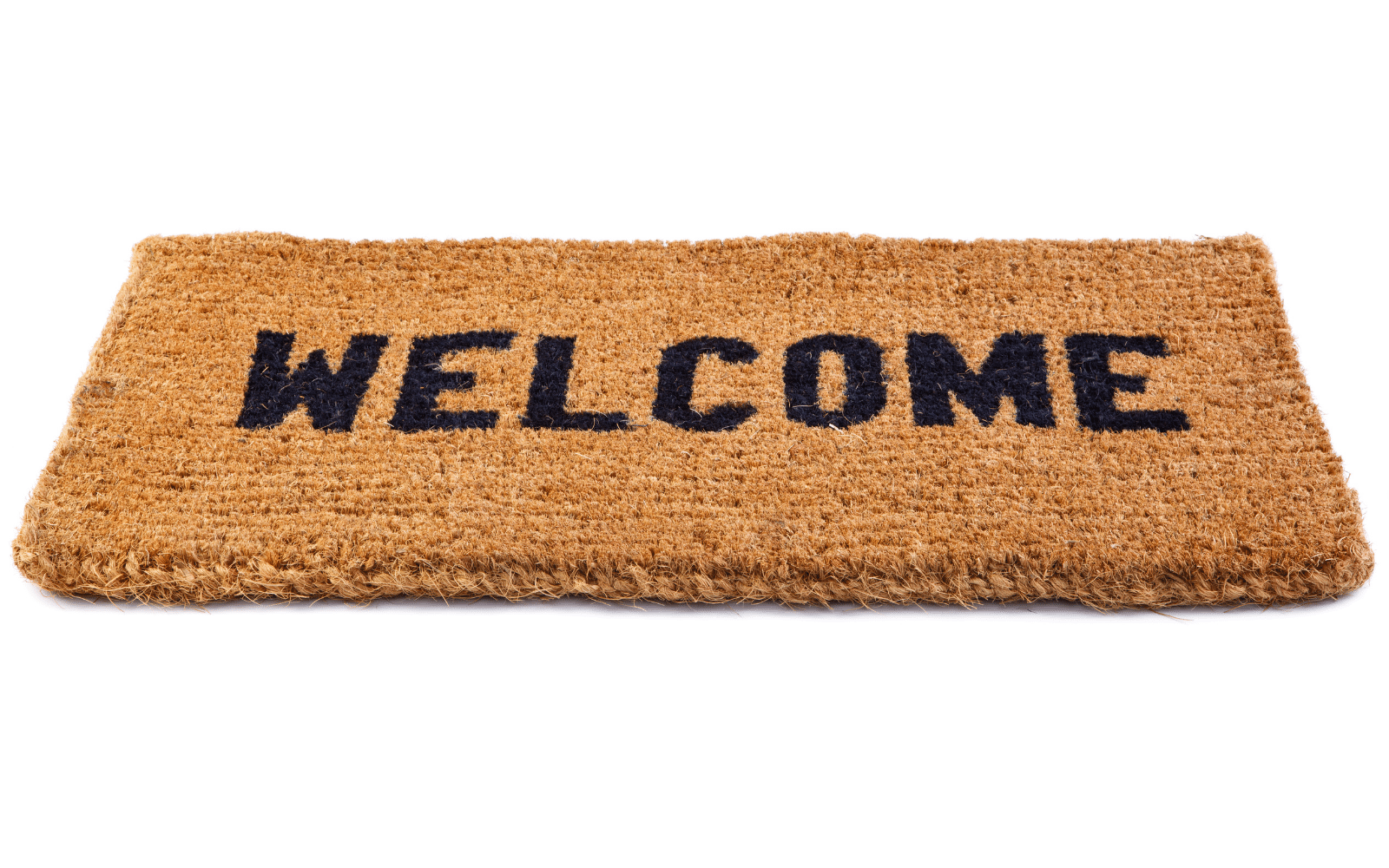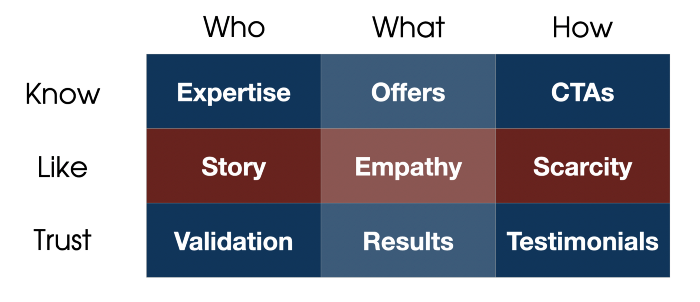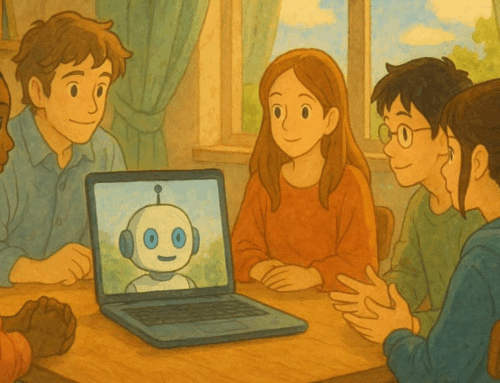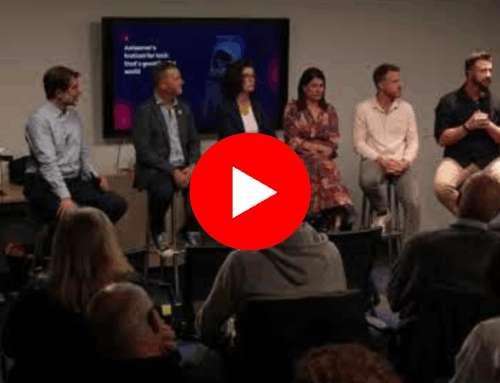Email is the virtual welcome mat to your business

Photo by RTImages on iStock
The moment I stepped into the store, I felt something was wrong.
My wife and I were strolling down Hawthorne Street in Portland, Oregon. Our young kids were at home with their grandmother babysitting, and we were on our first date in a long time.
We entered a store that looked interesting from the outside. There was spiritual art hanging in the windows, displays of candles and books, and little statues of fairies and wolves. (We’re hippies, we like that kind of store.)
As we stepped inside to browse, the shopkeeper was staring at us.
“Hello,” I said.
“Can I help you find anything?” she demanded.
I shrugged. “No, we are just looking.”
We wandered through the store, chatting about things we found interesting. After a few minutes, we returned to the door. When we opened it, the shopkeeper demanded once again, “Can I help you find anything?”
I held the door open for my wife and looked at the shopkeeper over my shoulder, confused by her question. “No,” I said. “Thanks. Have a nice day.”
She scowled at me as we left.
Out on the sidewalk, my wife and I talked about the strange experience. We like the kinds of things she had for sale in her store. There were plenty of things we could have purchased. But the shopkeeper did not make us feel welcome.
Email Confirmations are the Welcome Mat to Your Showroom
I’ve had similar experiences online. After subscribing to someone’s newsletter, the very first email demands to know how they can help.
Right after subscribing, I often don’t know what I need yet, or even what I’m looking for. I’m just browsing.
Subscribing to a newsletter and starting a new relationship online is like wandering into a shop for the first time. For a digital business, your email confirmation saying ‘Welcome to my list!’ is the welcome mat into your showroom.
People agree to enter your corner of the internet and are willing to browse your offers. This is your best opportunity to show your new customers around your little shop.
Imagine if that shopkeeper had welcomed us with a smile and said, “We just got some new books in, over on that wall. What kinds of books do you like?” I would have happily told her all about my interests, and she could have learned about the sorts of things she could sell to me easily.
Your new subscribers can be treated the same way. Right after they confirm their subscription, fresh email subscribers are the most open to learning about your brand, your offers, and your story.
Make your new email subscribers feel welcome.
“The very first email you send to a new subscriber sets the tone for how they see you for the rest of their time with you — so you want to get this one right. It’s also the single best email for getting them to look at specific pages of your site, like popular posts or product pages.”
Your automated welcome email series sets the tone for your relationship
Most businesses just set up a default confirmation email that says, ‘Thanks for subscribing to my list!’ and leave it at that.
Imagine this happening in someone’s shop. The little bell rings. You walk in and wipe your feet on the mat. The shopkeeper says, ‘Thanks for coming in!’ and disappears into the back.
It’s up to you to browse through the shelves, develop questions, and decide to make a purchase. All on your own.
Now, imagine the best kind of experience you’ve had in a shop. The shopkeeper asks good questions, makes recommendations, and guides you seamlessly to what you should do next. Before you know it, you are at the counter pulling out your wallet as your new purchases are being bagged. That’s what your email welcome series can do for your virtual customers.
“Autoresponders are the hardest-working, unsung heroes of content marketing. They’re a series of emails you write once and set up to send out at pre-set intervals to anyone who asks for them.”
– Beth Hayden
Best Practices for Your Email Welcome Series
-
- Set expectations with your automated welcome emailAfter someone subscribes to your list, you can say, ‘I’m going to email you again in three days with a message about x.’ And then, your email onboarding system automatically sends that message. The fulfilment of expectation builds trust. Be clear about the kind of content they can expect to receive and what you will be asking them to do.
- End every automated welcome email with a single CTAEvery email in your onboarding series should have a call-to-action at the end. It’s best to have just one because if you provide too many choices your user will take none of them.
Emails are free, send another one.
If an email in your onboarding series has multiple calls-to-action (Read this article! And that one! And buy this thing, too!) you can split that up into different emails, and send them on different days.
1. Invite connections across platforms
Email is only one of the channels we use to communicate online. If you are active on Twitter, or Instagram, or Medium, invite your new subscribers to follow those accounts, too.Talk about what you like about your favourite platforms, why you prefer this one over others, and link to one of your best-ever posts. This provides an extra autoresponder email that helps people know, like, and trust you.
2. Tell stories of other satisfied customers
Show empathy with the problems that your subscribers face, and describe the results that your clients have achieved. These stories and case studies can help your new subscribers self-identify as someone who could be one of your customers, too.
3. Provide value at least as often as you sell
If you don’t alternate value with sales, your unsubscribe rate will be high. Not many brands can send sales messages every day, and if you are gaining new subscribers with a Lead Magnet strategy, then your list is made up of people who want to learn how to solve a specific type of problem. Continue providing solutions to them at least as often as your sales messages.
4. Offer clear instructions on how to do business with you
Your email onboarding sequence helps subscribers know what you offer by automatically sending information about your best-selling (or highest-profile) offers. They will only know about them if you are willing to share specific and clear instructions on the next steps. (If you need help on clarifying these next steps, make a Customer Journey Map.)
A Good Automated Welcome Email Series Builds Know, Like, and Trust through Who, What, and How

New email subscribers get to know who you are when you share your expertise. They like who you are when you share your stories, and they trust who you are when you validate your promises to them.
After they have read a few of your emails, they learn what your offers are. If you tell good stories, they will develop empathy for the characters in those stories. If you can demonstrate results, they will trust your methods.
Clearly describing how to do business with you is accomplished by a CTA or a call-to-action. CTAs can be difficult to write in the moment, so it’s helpful to compose them in advance. (My Promo Copy Workbook can help you there.)
You can inflate the value of your offers by introducing scarcity. If this is the only time to buy something at this price, or if your calendar will be filled after the available spots are taken, people will like it more.
Finally, third-party validation of your effectiveness is the best way to build trust. Provide testimonials in your email onboarding sequence, and you can set up a system that automatically converts the right strangers into customers.
“Autoresponders allow you to build ‘know, like and trust’ before you ask for the sale. That way, you can convert more customers, and you can do it without being overly ‘salesy’ or pushy.”
– Mary Fernandez
Case Study: Welcome series email funnel example
Studies show that takes more than seven touches to make a sale. Your email onboarding sequence can take care of those touches automatically.
Here’s how Claire Pelletreau set up her email onboarding sequence:
- PDF delivery + pitch for tripwire, includes countdown timer in email
- K-L-T email
- K-L-T email
- K-L-T email
- 2nd pitch for tripwire, includes countdown timer in email
- K-L-T email
- K-L-T email
- K-L-T email
- 1st email pitching the bundle, includes countdown timer
- 2nd email pitching the bundle, includes countdown timer
These frequent ‘know-like-trust’ emails provide value, answer unasked questions, and deepen the relationship.
“When I finally bit the bullet, upgraded to a paid plan with Mailchimp, and sent new subscribers a series of emails that shared my top blog posts, my story, and links to my services and course pages, I started getting a lot more clients and customers.”
— Claire Pelletreau
Notice how she alternates value with selling. She provides value more frequently than she sells, which gives her the credibility to make offers.
If a shopkeeper educates you with some free advice, it lowers your resistance to messages that sell. According to a study by Conductor, consumers are 131% more likely to make a purchase after consuming educational content.
Is Your Welcome Mat Dusty?
How long has it been since you subscribed to your own email newsletter?
One of the first things I do with a new client is complete an Onboarding Audit. I use a testing email address to subscribe to their email newsletter. After a couple of weeks (if their welcome series even goes that long), I can run a search on my inbox for that testing email address and see the entire welcome series just as a new subscriber would see it.
You can create your own testing email address if you know how to create email forwarders. Set up an email address like [email protected].
Or, if you have a Gmail address, you can simply add ‘+testing’ to your handle (like [email protected], where ‘myaddress’ is your current Gmail handle) and it will still go to your Gmail inbox.
What I would like you to do, right now, is subscribe to your own email newsletter with a testing email.
Next week (or tomorrow, if your autoresponder sequence is just one email) take a look at what your new subscribers see. Ask yourself: How can I be the best shopkeeper? How can I show them around? What can I send them at the start of our relationship?
Feel free to use my Stellar Email Template if you need some fillable formulas to flesh out your email copy. You can use my simple welcome email template for new subscribers, with copy-paste formulas for follow-up emails that promote your offers and your best posts.
This article is an excerpt from my book, ‘Marketing Yourself.’ You can read the whole book here.





Leave A Comment